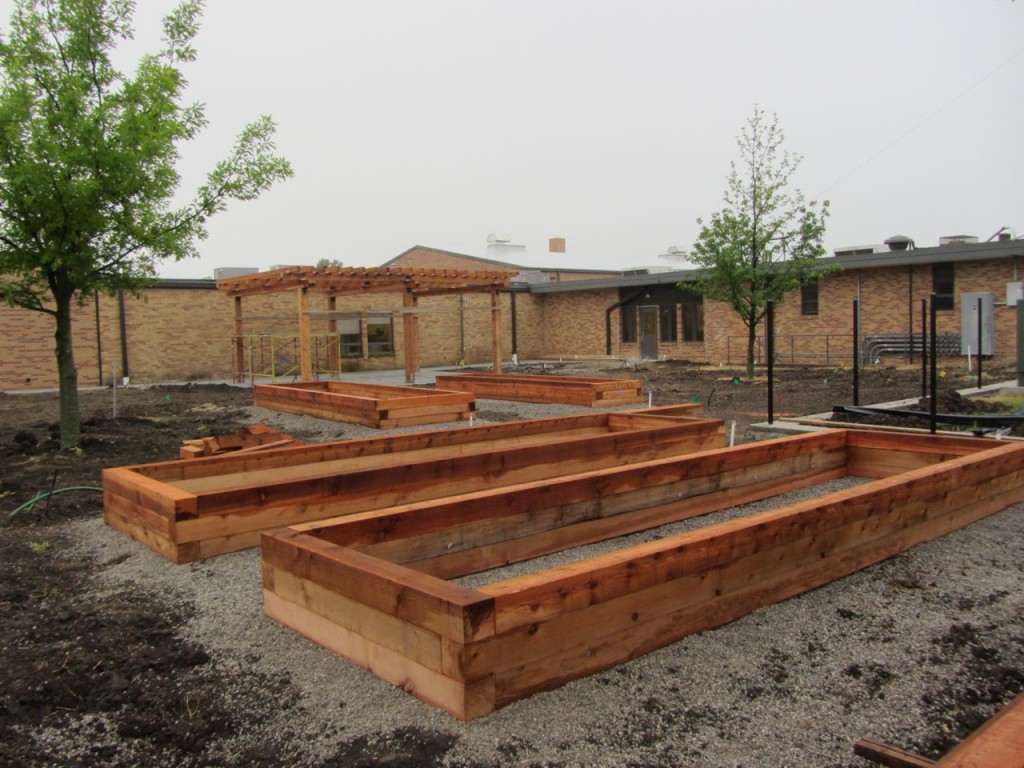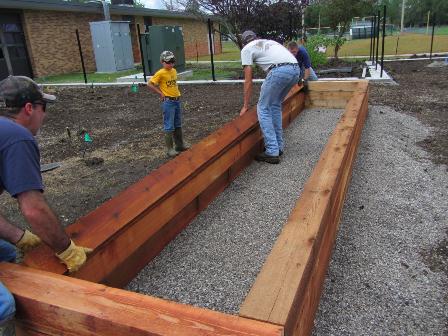 To celebrate Earth Day, a few of my fellow master gardeners and I led eight small groups of sixth graders through a nature trail. As we stood under a mulberry tree, with its immature green berries, I asked how many had ever picked fruit from a tree. In each group of twenty, only three to five students raised their hands (gasp…really?). Picking fruit from a tree and enjoying its freshness should not be a unique opportunity; but it is! Oh how I wish the mulberries had been ripe and each student could have experienced a fresh mulberry. Reaching up through the limbs to pick a mulberry is in itself a valuable lesson in science. Is there a better way for our youth to learn about nature; to learn how food is produced; to experience first-hand how a farmer works with earth to feed the world? I think not! (Preach it, Sister!)
To celebrate Earth Day, a few of my fellow master gardeners and I led eight small groups of sixth graders through a nature trail. As we stood under a mulberry tree, with its immature green berries, I asked how many had ever picked fruit from a tree. In each group of twenty, only three to five students raised their hands (gasp…really?). Picking fruit from a tree and enjoying its freshness should not be a unique opportunity; but it is! Oh how I wish the mulberries had been ripe and each student could have experienced a fresh mulberry. Reaching up through the limbs to pick a mulberry is in itself a valuable lesson in science. Is there a better way for our youth to learn about nature; to learn how food is produced; to experience first-hand how a farmer works with earth to feed the world? I think not! (Preach it, Sister!)
The experience of a hands-on experience with food is just one reason we are building an outdoor classroom and learning garden at our school. It will provide an opportunity for students to get a break from the concrete, hand sanitizing culture into a natural environment to experience nature as a primary tool for learning.
The outdoor classroom and learning garden that we are currently building contains many elements, including fruit trees that teachers can use to teach core subjects through hands-on lessons. The feature element is the raised garden beds. Kids are tough on things; I would know- I have three who vandalize my house everyday (sigh). Durability and safety should be your number one concern when choosing building materials for a learning garden. Whether it is the benches, greenhouse, garden shed, raised bed, or compost bin, use materials that will last and can withstand years of intense use. That also includes the garden tools. There are a lot of cheap flimsy garden tools; resist the urge to go cheap and buy the ones that will last through the abuse of junior gardeners.
This last week, three volunteers constructed our four raised garden beds with untreated cedar lumber. Three of the beds are 6 x 20 and the other is 4 x 20. The two-foot deep beds will eventually be filled with a combination of topsoil and compost. The soil is the main ingredient to our garden’s success as it holds all of the nutrients our vegetables will need to grow. Volunteers put a layer of small gravel under the beds. This was done to help level the area and for drainage. I would encourage anyone planning a garden to put special thought into drainage. Gardens are watered every day, and if the water cannot flow out and away from the garden beds, it will continually be wet and messy, which would not be a favorable combination for groups of children to track back into the school building. Also, most garden vegetables prefer a well-drained soil. Soil saturated with water deprives the roots of oxygen.
We do not want to deprive our plants of oxygen just as we do not want to deprive our youth the opportunity to learn from nature. The educational and environmental impact of an outdoor classroom and learning garden is not easily measured, but it certainly can be measured by a smile when they bite into a freshly picked apple.

Read more about classroom gardens in our Learning Garden blog series:
Learning Garden 11: Planting Day
Learning Garden 10: How Does Your School’s Garden Grow?
Learning Garden 9: Rain Barrels
Learning Garden 8: Plant Selection
Learning Garden 7: Raised Beds
Learning Garden 4: Designing the Garden







Wow! It is so inspiring to see all of this progress!